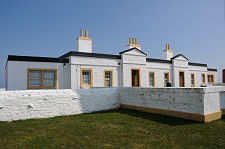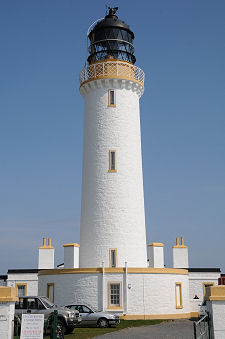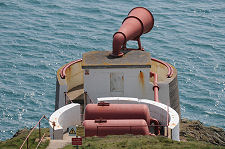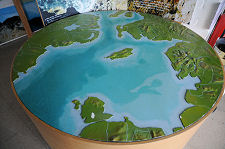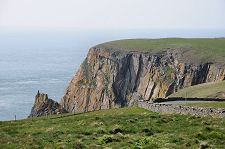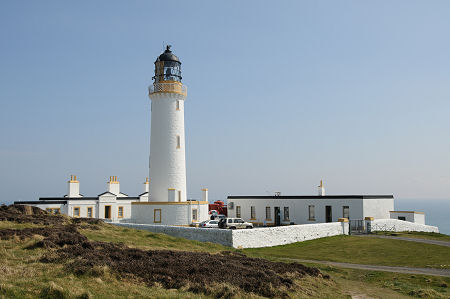 Mull of Galloway Lighthouse |
The Mull of Galloway is the craggy punctuation point that brings the Rhins of Galloway to an abrupt end. This is Scotland's most southerly point and as the viewpoint indicator at the highest point shows, Skiddaw in the English Lake District is visible 68 miles due east of here, while Snaefell on the Isle of Man can be seen 31 miles to the south-east. On a really clear day you can even see Snowdon, 133 miles to the south in Wales.
"Mosts" always attract visitors, and Scotland's most southerly point is no exception. Perhaps the most striking thing about the Mull of Galloway is that anyone who makes the 20 mile trip from Stranraer is likely to find a great deal more to see and do here than they might expect.
The most obvious feature of the Mull of Galloway is the spectacular landscape. The land kinks sharply to the east at its southern tip and rises to a height of nearly 280ft, in many places sheer from the sea. At the kink the road reaches a low point of 70ft as it traverses the narrow isthmus between the bays of East Tarbet and West Tarbet: it is almost as if nature considered making the Mull of Galloway into an island before deciding against.
Early residents of the area clearly found this a useful feature and it is still possible to trace linear earthworks across the peninsula a little above the narrowest point of the isthmus. These are some 400m long and comprise three ditches with two intermediate banks up to 4m wide an 2.2m high. Someone, probably in the late Bronze Age or Iron Age, put a great deal of effort into keeping unwanted visitors out.
As you climb past the earthworks you see to your right the viewpoint provided by Kennedy's Cairn. But by now you will probably be fairly focused on gaining what is the Mull of Galloway's second most striking feature, its lighthouse. This is intermittently visible for a number of miles as you make your way down the roads past Port Logan and Drummore, and like all lighthouses it exercises a powerful attraction.
The Mull of Galloway Lighthouse is a 26m or 85ft high tower surrounded by lighthouse cottages and workshops. It was built here in 1828 at a cost of £9000 by Robert Stevenson, a member of the family of engineers responsible for most of Scotland's lighthouses. The lighthouse was oil fired until 1971, since when it has operated by electricity. The foghorn is no longer in use, but can still be visited via a set of steps that descend part way down the cliff. The lighthouse was automated in 1988 and is now controlled remotely from the HQ of the Northern Lighthouse Board at 84 George Street in Edinburgh. The lighthouse keeper's cottages are today let as holiday accommodation by the Mull of Galloway Trust.
The story of the lighthouse is told in the Mull of Galloway Lighthouse Exhibition, housed in the old lighthouse workshops and open for the summer half of the year with a small admission charge. At weekends admission includes a climb of the 114 steps to the top of the lighthouse itself.
The Mull is also home to one of the RSPB's smallest nature reserves. This has a visitor centre run from white cottages a little to the west of the lighthouse complex, also open for the summer half of the year. Admission is free.
The final significant feature on the Mull of Galloway is also the most recent. Just below the car park, the access road passes the glass fronted and grass roofed Gallie Craig Coffee House, built here in 2004. The site is spectacular as it is perched on the top of cliffs that drop directly into the sea below, and the resulting views are stupendous. The building here of a sensitively designed licensed restaurant capable of accommodating up to 90 people must have been quite a leap of faith, and it is good to be able to report that Gallie Craig complements perfectly the Mull of Galloway's other attractions, making this an even more worthwhile place to visit.
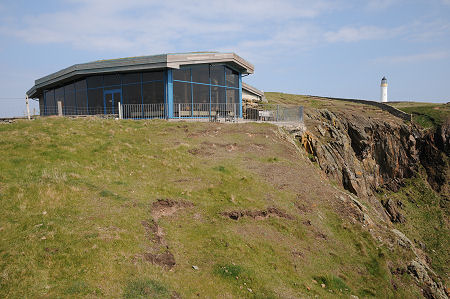 Gallie Craig, Cliffs and Lighthouse |
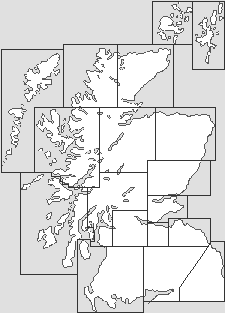
|
|
|
Visitor InformationView Location on MapGrid Ref: NX 157 304 Mull of Galloway Trust RSPB Mull of Galloway Gallie Craig Coffee House What3Words Location: ///solar.sorters.contrived |
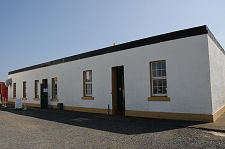 Lighthouse Exhibition |
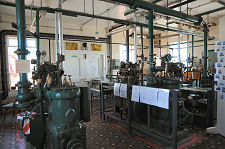 Part of the Exhibition |
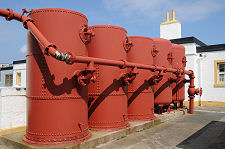 Fuel Tanks |
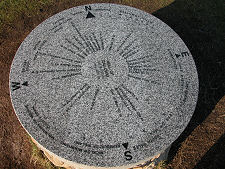 Viewpoint Indicator |
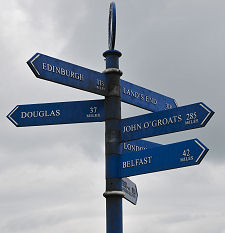 John O'Groats 285 Miles |
